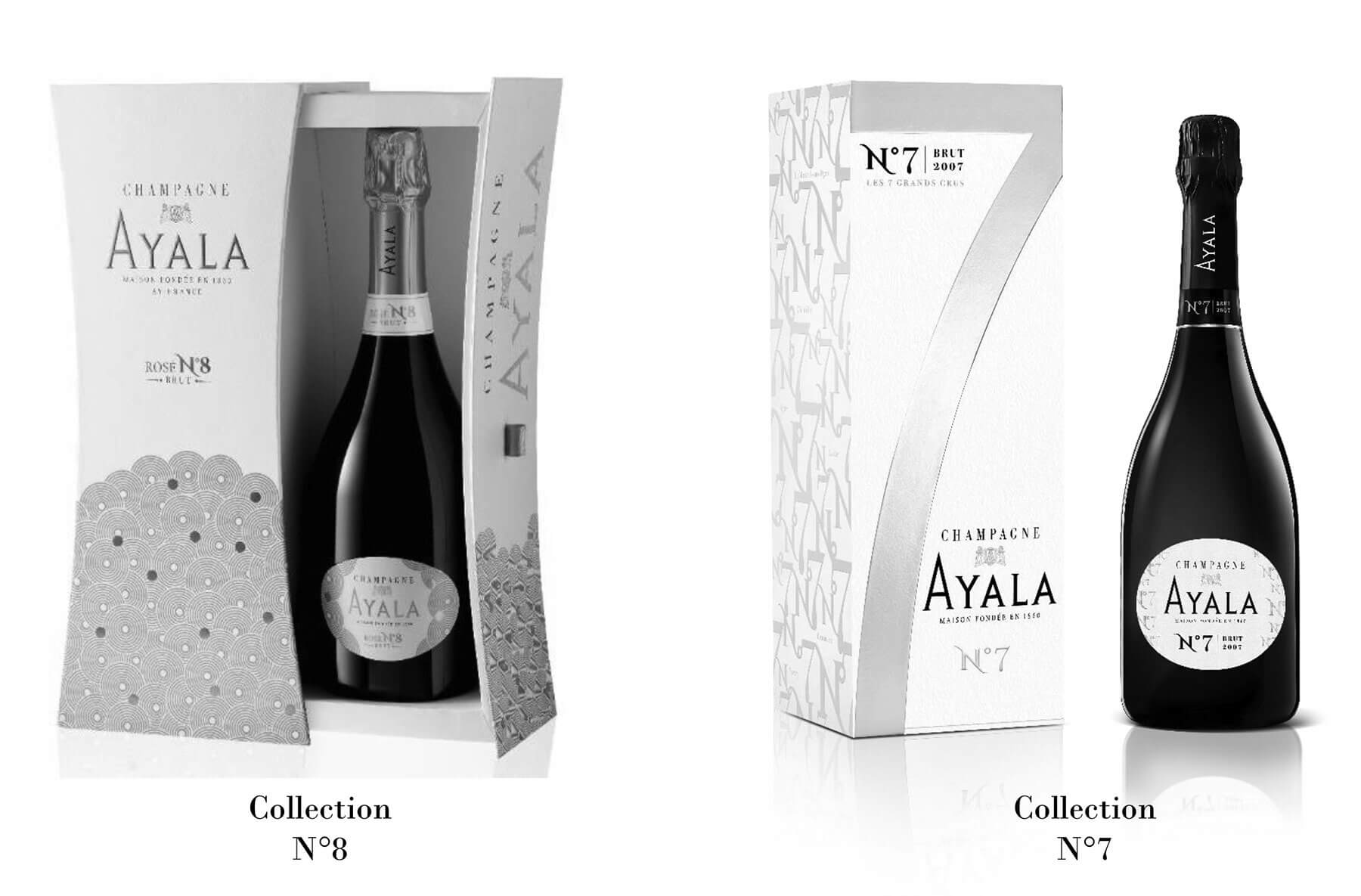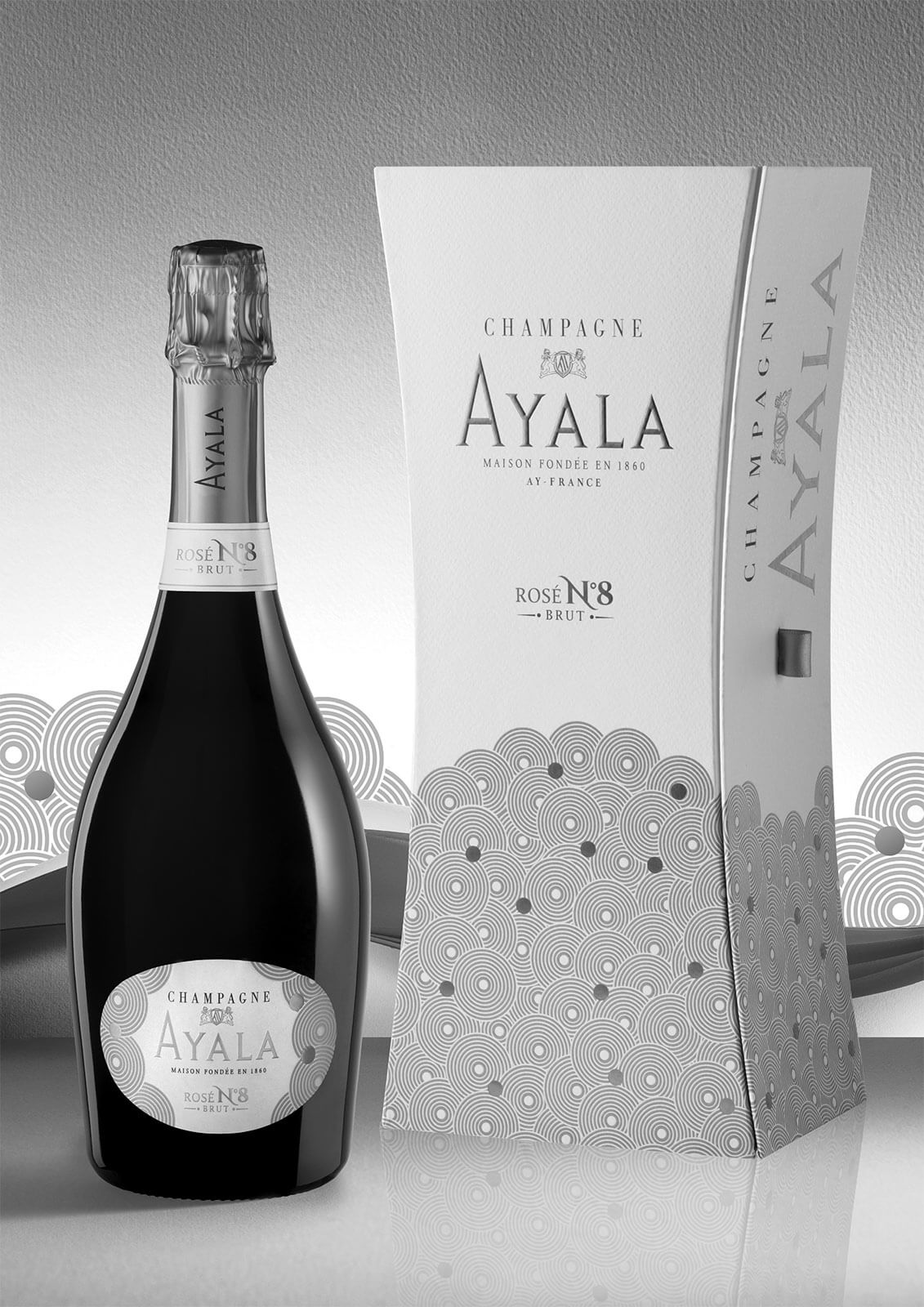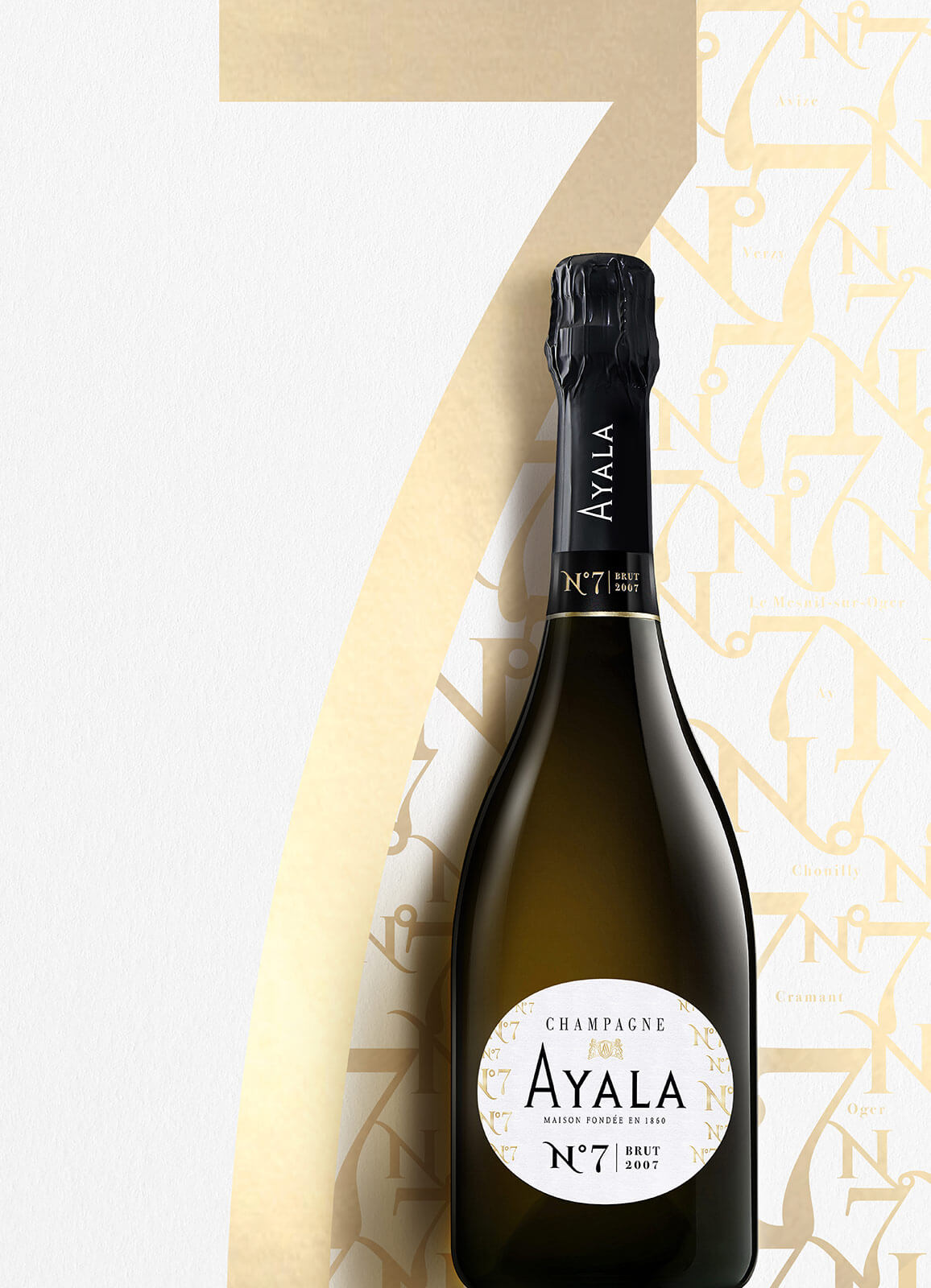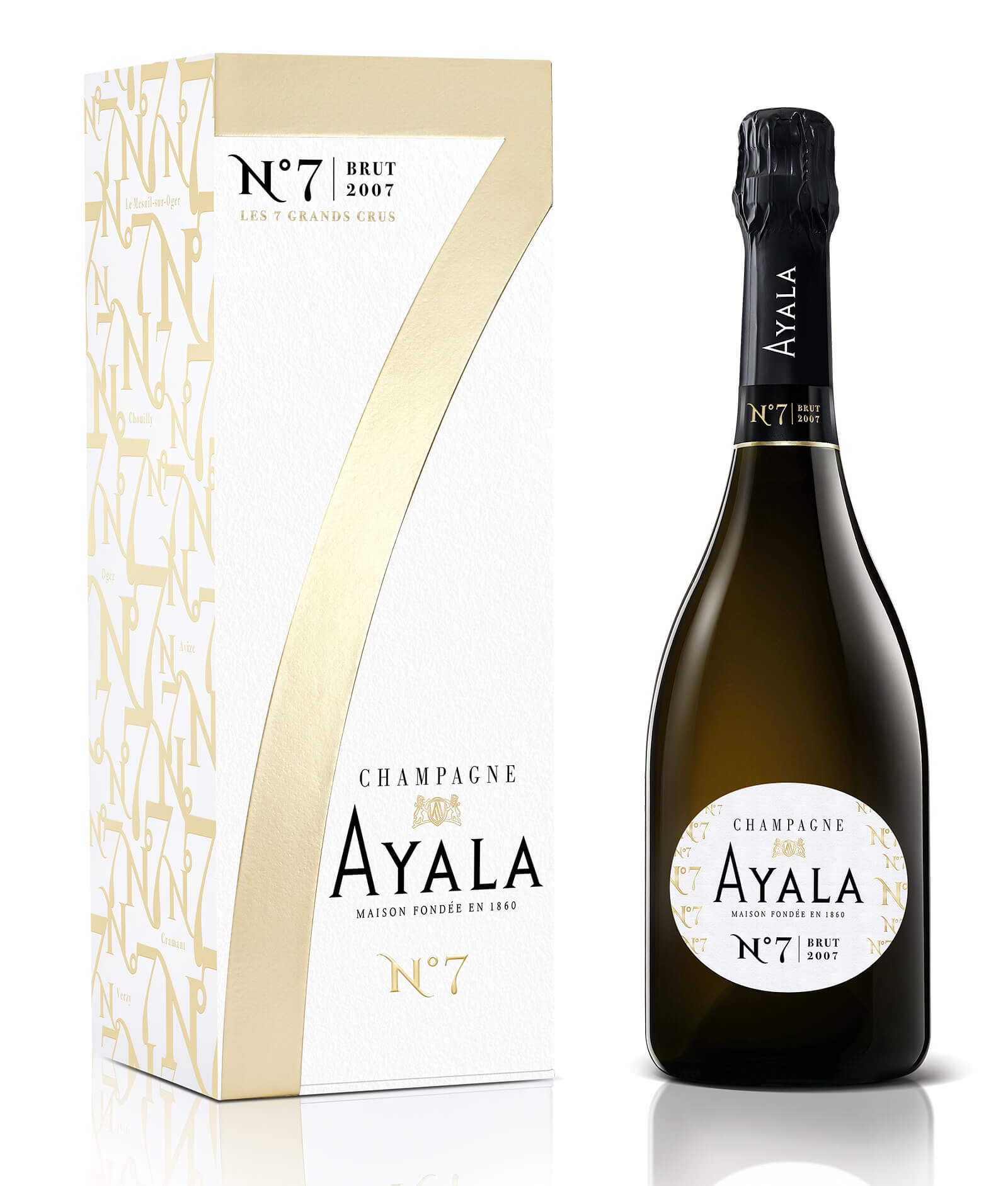by Ken Gargett
The Ayala champagne house has enjoyed a revival of fortunes in recent years, the quality of its champagnes has never been better. If you have neglected this house in the past, it’s time to rethink.
Unfortunately, the devastation wrought by the pandemic has impacted sales of champagne more viciously than almost any other style of drink. Hopefully this is a temporary blip, and it won’t be long before we are all enjoying these great wines again.

Champagne Ayala Collection No. 7, 2007
Many champagne lovers think of this house as the little sister of the famous Bollinger. I prefer to think of it as a once-venerable house saved by Bollinger.
The house dates back to 1860 when Edmond de Ayala, who was in France as his father was a diplomat from Columbia, got married. His wife was described as “a socialite from Aÿ” (which sounds a bit like describing the poor woman as one of the Kardashians of that era).
Edmond decided he’d start a champagne house and he did so most successfully, his wines being especially popular in England. Much of that success was attributed to the efforts of Fernand, Edmond’s younger brother, who moved to London in 1863. His connections to the aristocracy proved invaluable.
Ayala was also one of the houses that moved to lower dosage, following the lead of Madame Pommery and her famous 1864. Dosage is a corrective measure that balances acidity and/or imparts a level of sweetness.
Ayala’s 1865 has been described as having a “very low dosage for the time.” It’s worth bearing in mind that what was low back then would still have been seriously sweet for us. Dosages are far lower these days.

Map of Ayala vineyards in Champagne, France
Champagne Ayala was also one of the founding members of the Syndicat des Grandes Marques in 1882. By the 1920s, it was producing more than a million bottles a year and was official supplier to the royal courts of both England and Spain.
It had purchased another champagne house, Champagne Montebello, and had also taken possession of the famous Château de Mareuil-sur-Aÿ, which the house owned until the mid 1930s. At least the family fared better than one previous owner who was sent to the guillotine.
If we look at the last couple of decades of the previous century and the first few years of this one, the house was an adequate performer. But in Champagne, that is hardly a compliment. It was not a house one would seek out.
The vintages, when one encountered them (not often), were acceptable. But the non-vintage and blanc des blancs, and even its prestige champagnes, never really excited. A passing mark is just not good enough at this level.
In 2005, Ayala was purchased by Bollinger. It is still described as “family owned.” Just not the original family.
For me, and I am sure for many other champagne lovers, this signaled what we expected to be a turnaround leading to first-class wines.
To be honest, if we were expecting immediate glory (and I’ll confess to a bit of that), it was inevitable that we would be disappointed. And we were. Great champagne takes time. A lot of time. The improvements have been evolutionary, rather than revolutionary, but the house of Ayala is now approaching where we expected it to be.
It did jump on board the sans dosage bandwagon (no-sugar styles) that were briefly so popular (and, I suspect, are still beloved of the supermodel crowd, thinking no sugar means no calories, forgetting about the calories contributed by the alcohol), but I find that is a very hard style to master, and nothing I saw from Ayala convinced me that it had done so. But the wines were certainly better than they had been.
The Ayala Collection today and notes on No. 7
Now we have the Ayala Collection, special champagnes to be released occasionally when they are ready for drinking. The first, which I’ll confess I never tasted, was a rosé, the No. 8, 2008. It does seem a bit odd to have the first in the Collection series called “8” and the second “7,” but no matter. It follows the vintages rather than any formal order. Actually, the house claims the “8” represents “renewal and creation” – and perhaps a clear play for the Asian market.

Champagne Ayala Rosé No. 8
Rosé No. 8, 2008 is a blend of Premier and Grand Cru vineyards from the Montagne de Reims. Only 14,700 bottles were made, comprising 51 percent Chardonnay from Rilly-la-Montagne and 49 percent Pinot Noir from Verzy, Aÿ, and Verzenay. This included 5 percent of still red wine added for color. It spent seven years on lees; dosage was 8 grams/liter.
Now comes the second release from the Collection series, No. 7, 2007 (AUD$200). This is a blend from seven of the finest Grand Crus from Côte des Blancs and Montagne de Reims’ 2007 vintage.
With the stupendous 2008 vintage looming – and some cracking years like 2002 and 2004 – many fine champagnes from years like 2005, 2006, and 2007 have largely slipped through the cracks for most of us as we enjoy an abundance of riches. However, both Bollinger and the glorious Salon released 2007 vintage champagnes, so it pays not to underestimate this ripe, friendly year. It does seem that 2007 suited Chardonnay more than Pinot Noir.

Champagne Ayala Collection No. 7, 2007
No. 7, 2007 has just 6 grams/liter dosage and spent an impressive 11 years on lees. The vineyards involved, all Grand Cru, are Avize, Chouilly, Cramant, Le Mesnil-sur-Oger, and Oger from the Côte des Blancs as well as Aÿ and Verzy from the Montagne de Reims.
The blend is 66 percent Chardonnay and 34 percent Pinot Noir. Ayala tends to be seen as a Pinot house, one reason it presumably appealed to Bollinger, but the quality of the Chardonnay here would belie that.
What is interesting is that the bottle has seen the use of an agrafe cork while on lees. Not many houses maintain this tradition, but Bollinger is one. You can tell by the lip of the bottle not having the typical beer bottle lip for wines that spend time under crown seal while on lees, but a firm square arrangement that is necessary when they spend their lees years under cork.

Champagne Ayala Collection No. 7, 2007
For me, the No. 7, 2007 champagne was wonderfully aromatic. Nuts, stone fruits, florals, some underlying minerality. Apricot kernel notes. Hints of creamy peaches. Grilled cashews. This is ripe, the antithesis of the refined, more austere classics we are seeing from 2008.
This is a champagne of sunshine and plushness. For me, this is very much like the very best champagnes from 2003 aspired to be, but they just never made it. A nice flick of acidity backs it all up. Finishes with hints of mango and caramel. Good length. 96,
This is a really good champagne; indeed, as good as I can ever recall from Ayala. And if No. 7, 2007 is the direction that big brother Bollinger is also taking then we have a lot of great champagne to look forward to in the coming years.
For more information please visit www.champagne-ayala.fr/en.
You may also enjoy:
Bollinger 2012 Champagne: One Of The Very Best Wines And Vintages Of The Century
Bollinger 2008 La Grande Année Champagne: Still Young, But Already A Classic
Bollinger RD 2004: When It Came To Champagne (And Much Else), Madame Bollinger Had Excellent Taste
Dom Pérignon 2008: From The Monk’s Earliest Beginnings To The Most Glorious Champagne Vintage





















































Leave a Reply
Want to join the discussion?Feel free to contribute!